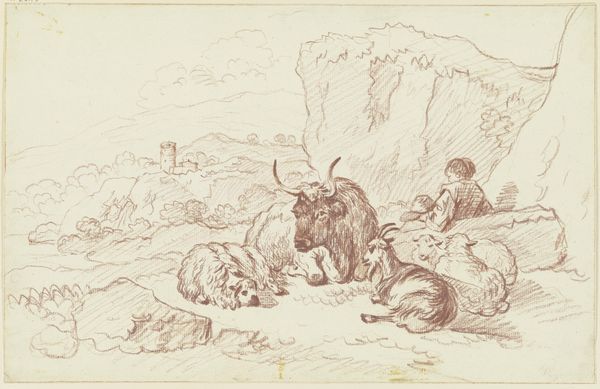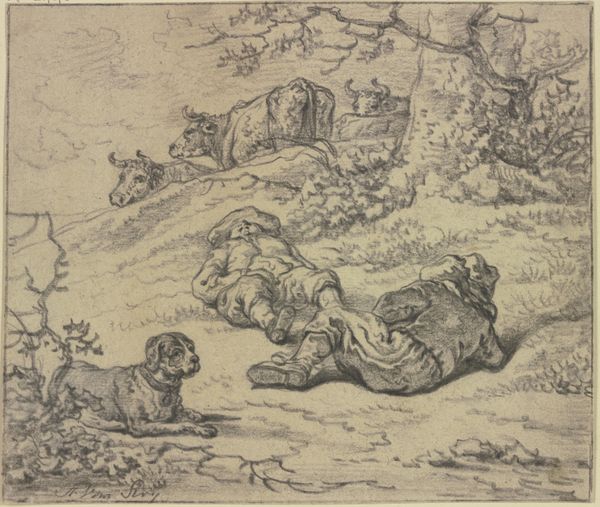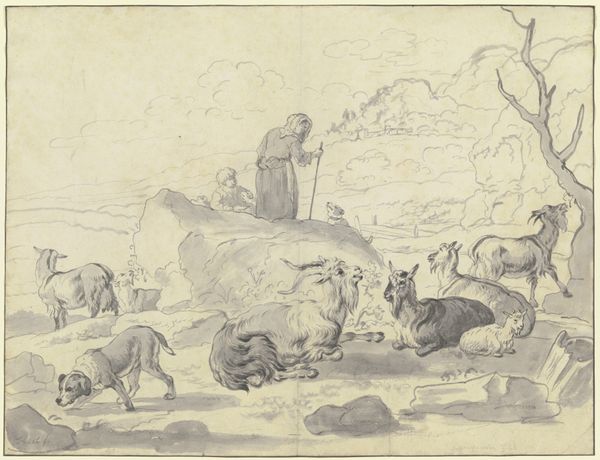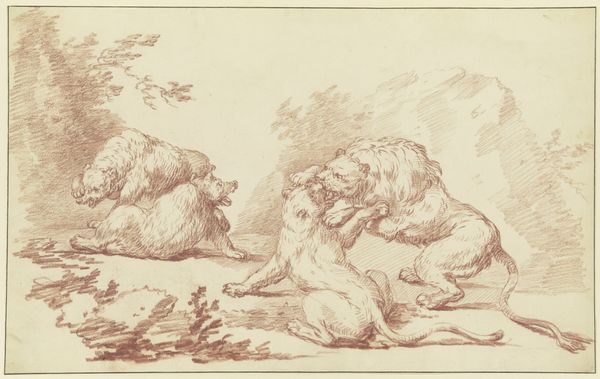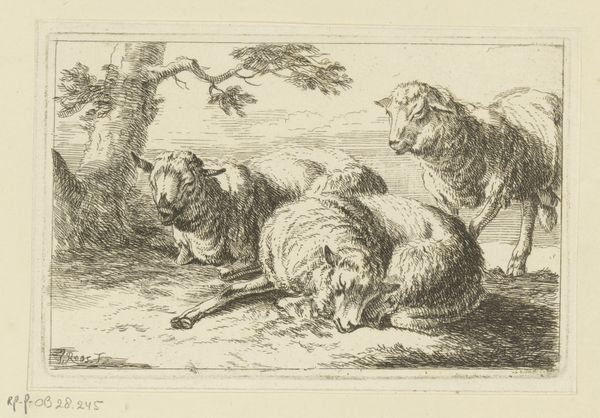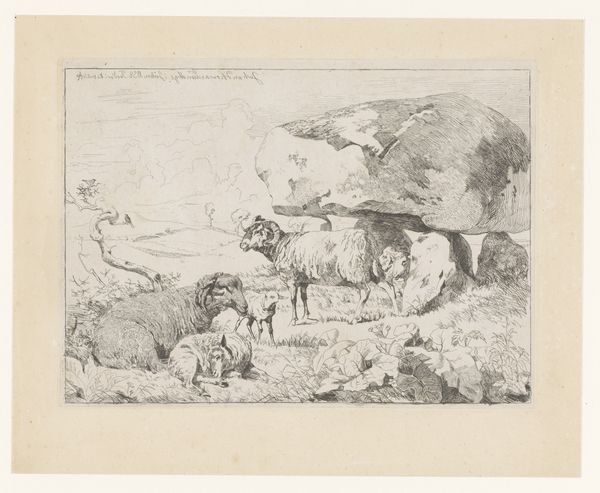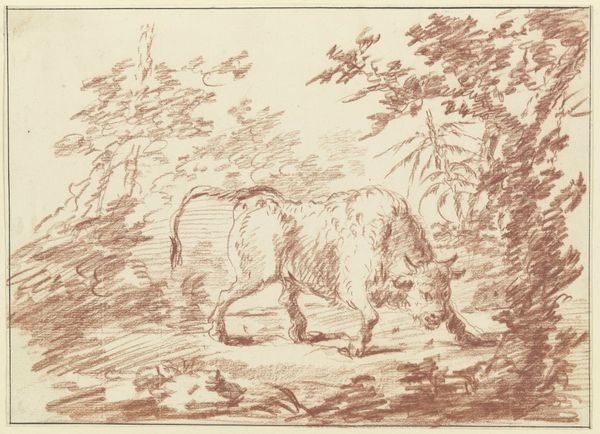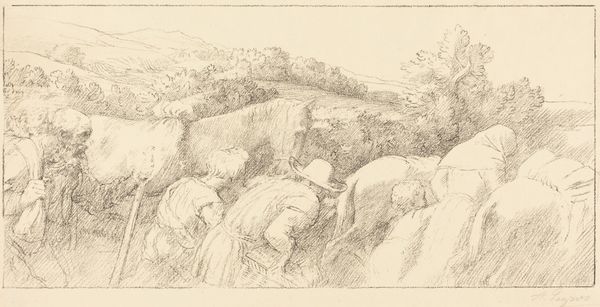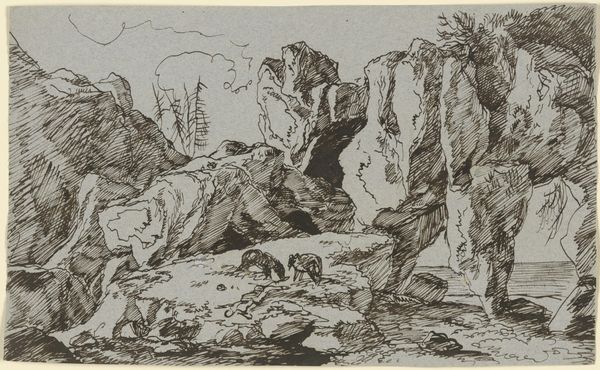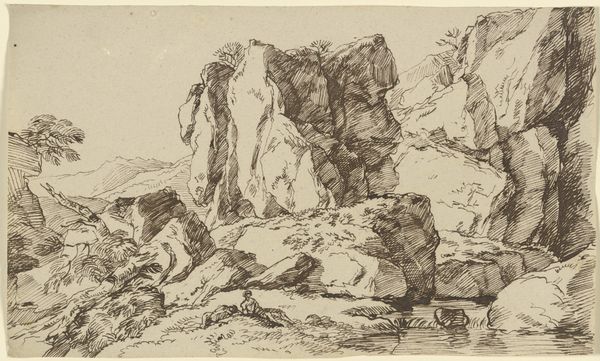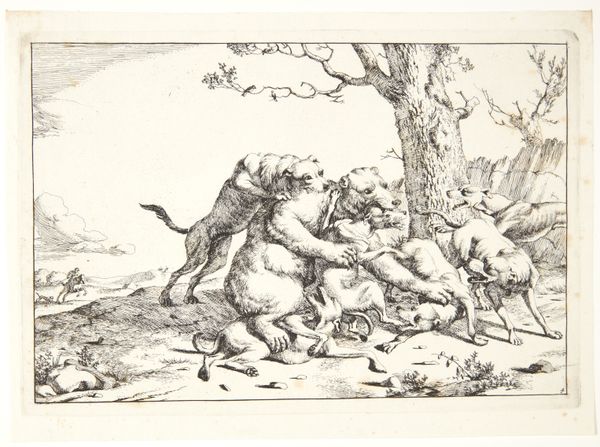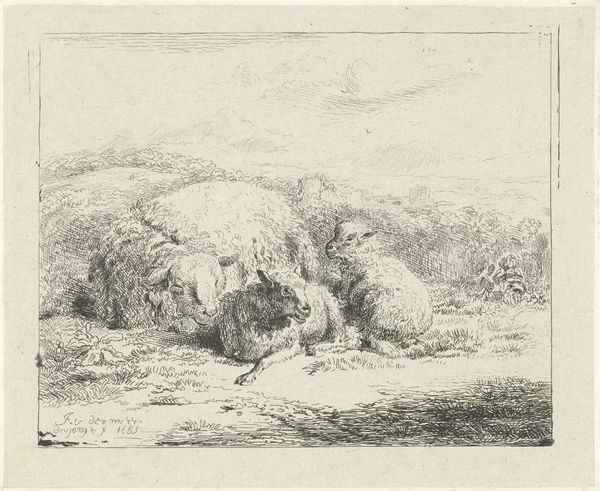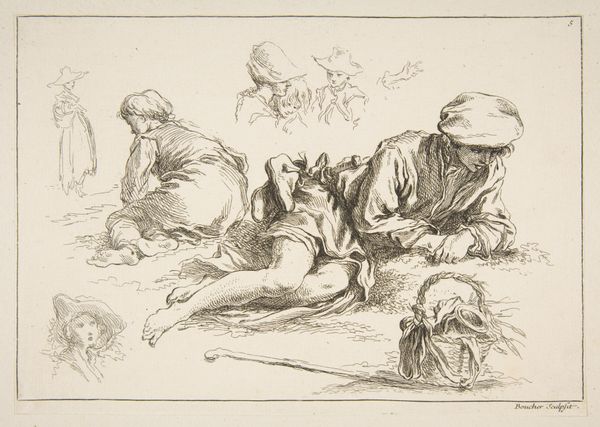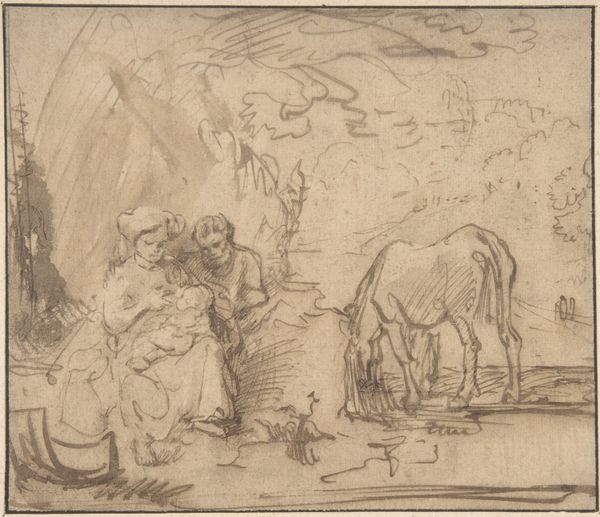
drawing
#
drawing
#
landscape
#
figuration
#
realism
Copyright: Public Domain
Editor: This is a drawing titled "Hirtin mit Kind bei einem liegenden Ochsen," or "Shepherdess with Child by a Reclining Ox," by Friedrich Wilhelm Hirt. It's currently at the Städel Museum, and rendered in a landscape style with realistic figuration. It's intriguing how the composition feels so ordinary, but then the scale of the ox completely throws me off! How do you interpret this work? Curator: It is a fascinating piece. It certainly speaks to how art reinforces or challenges prevailing social structures and values. Looking at the context in which Hirt was creating, consider how pastoral scenes like this became popular as a reflection of and perhaps even an escape from growing urbanization. It idealized rural life, something that’s accessible to the public through displays. Do you think there’s any element of social commentary? Editor: I can definitely see that contrast. The detail given to the ox almost elevates it beyond a simple farm animal. Its massive size gives a sense of power. I wonder if that’s symbolic of the peasantry, like a gentle giant overlooked but inherently powerful? Curator: An astute observation! The rendering could indeed be a conscious choice reflecting social hierarchies. Or, Hirt might be engaging with the broader artistic trend of the time, where the display of realism itself carried political weight. Was Hirt making a statement about social values? The role of labor? It all intertwines, doesn’t it? Editor: It really does. I hadn't thought about the choice of realism as being a statement itself. Seeing it presented as it could subtly critique other idealized or more embellished styles of the period is intriguing. Curator: Exactly. This kind of work exemplifies how museums are not politically neutral spaces. They actively participated in constructing the narrative of a national identity, and determining cultural relevance. It challenges us to ask who art truly serves. Editor: I learned a lot today, and have much to consider about how to engage with art moving forward!
Comments
No comments
Be the first to comment and join the conversation on the ultimate creative platform.
